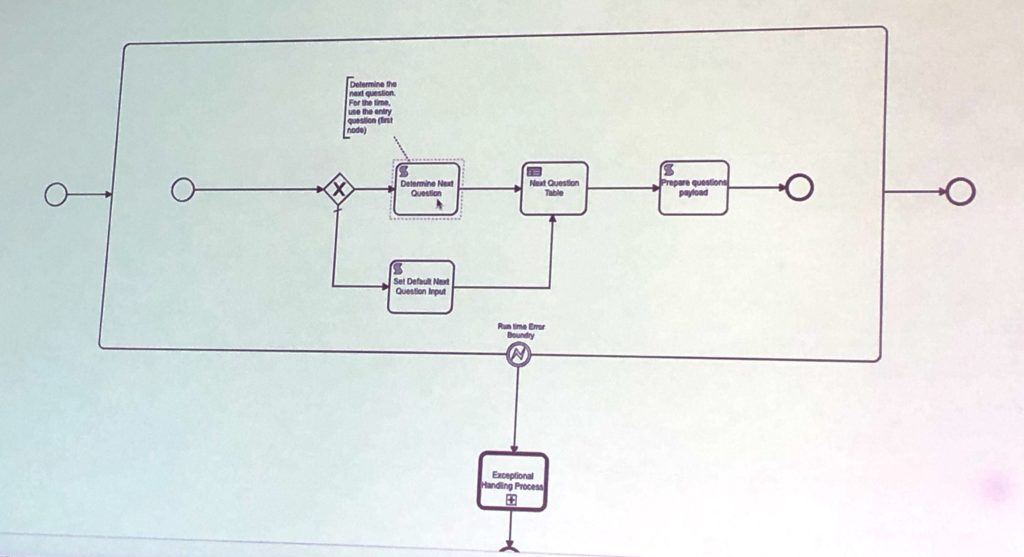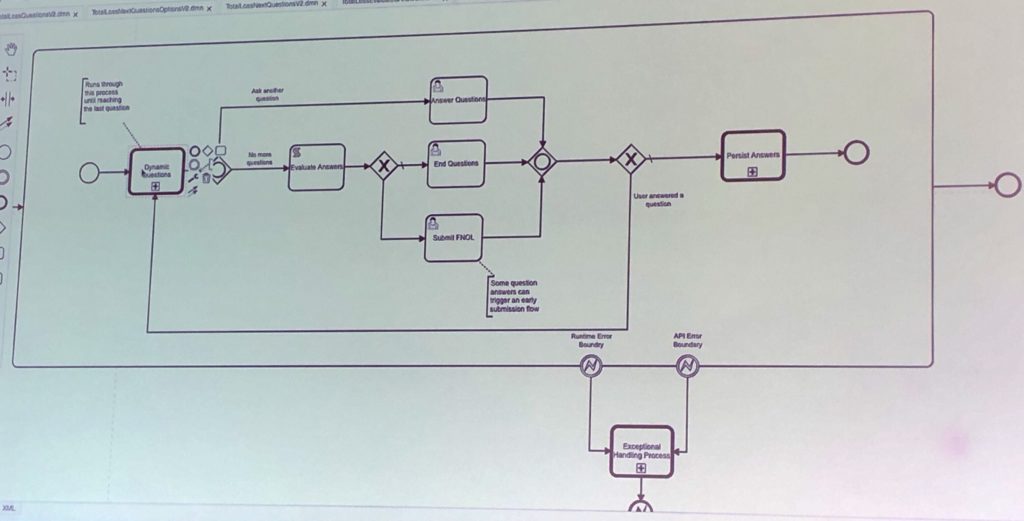Sowmya Raghunathan and Corinna Cohn presented on a claims intake implementation that uses BPMN and DMN in an interesting way: driving the intake forms used by a claims administrator when gathering first notice of loss (FNOL) information from a claimant. The idea is that the claims admin doesn’t need to have any information about the claim type, and the claimant doesn’t get asked any irrelevant questions, because the form always presents the next best question based on previous responses: a wizard-like model, but driven by BPMN and DMN.
As the application and technical architects at Indiana Farm Bureau Insurance, they were able to give us a good view of how they use the tools for this: BPMN for orchestrating the DMN and UI communication as well as storing the responses, DMN for defining the questions and question/response mapping, and a UI component for implementing the survey forms. They consider this a headless application, but of course, it does surface via the form UI; from a Camunda process standpoint, however, it is decoupled piece of the architecture that interfaces with the claims system.

We saw a demo of one of the claim forms at work, where the previous questions and responses can be seen, and changes to the previous responses may cause changes to subsequent questions based on the DMN decision tables behind the scenes. They use a couple of DMN tables just as configuration tables for the UI for the questions and options (e.g., radio buttons versus free-form responses), then a Next Question decision table to determine the next question based on the previous response: this table is based on a directed acyclic graph that links questions (nodes) via answers (links), which allows for easy re-navigation of the graph if an earlier response is changed.

BPMN is used to navigate and determine the next question in a dynamic question subprocess, and if the survey can be exited; once sufficient information has been collected, the FNOL is initiated in the claims systems.

The use of DMN means that the questions can be changed very easily since they’re not embedded in the code; this means that they can be created and modified by business analysts rather than requiring developers to code these into the UI directly.

The entire framework is reusable, and could be quickly reconfigured to be used for any type of survey. That’s great, because a few years ago, I saw a very similar use case for this in a clinical situation for a stroke assessment questionnaire: in a hospital setting, when someone arrives at an emergency department and is suspected of having had a stroke, there are standard questions to ask in order to evaluate the patient’s condition. At the time, I thought that this would be a perfect use case for DMN and BPMN, although that was beyond the scope of the project at that time.
